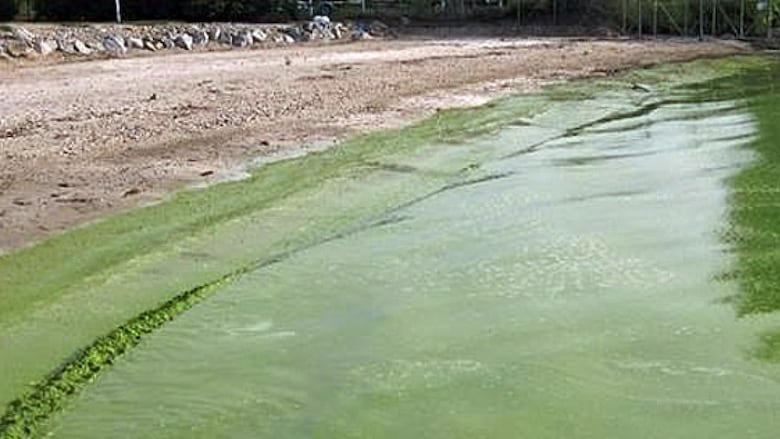Health unit warns of blue-green algae in Ruscom River
It hasn't tested positive for toxins yet, but it may become toxic, WECHU said

The Windsor-Essex County Health Unit (WECHU) is warning residents about a blue-green algae bloom in the Ruscom River.
It's located in the area of Trepanier Road and Lakeshore Road 129.
So far, chemical analysis has not found microcystin-related toxins in the samples collected, but the bloom may become toxic due to the algae identified in it.
The health unit is advising people who use wells or cisterns that draw water directly from the Ruscom River in the area of Trepanier Road and Lakeshore Road 129 — such as people who have private cottages with wells — not to drink the water unless they are routinely testing for microcystins using a licensed lab and results show levels less than 1.5 parts per billion.
Residents on the municipal drinking water system can continue to drink the water, the health unit said.
Routine water testing is done by the municipal water treatment plant and at this time there are no concerns.
Blue-green algae, or cyanobacteria, are microscopic organisms that occur naturally in freshwater lakes, ponds, rivers and streams in the late summer and early fall.
They are usually present in low numbers but can rapidly increase in warm, shallow, undisturbed surface water that gets a lot of sun. When this happens, they can form blooms that discolour the water or produce floating scum on the surface.
These blooms can make the water appear bluish-green, can form solid looking clumps, and may contain toxins, called microcystins, that can be dangerous to human and animal health.
Contact with microcystins can produce negative health effects in humans such as skin and eye irritations and if ingested can lead to headaches, fever, diarrhea, abdominal pain, nausea, and vomiting.
"As a reminder, wind and water conditions may move the blue-green algae bloom towards other areas," Medical Officer of Health Dr. Mehdi Aloosh said in a news release.
"Residents and visitors are urged to take a cautious approach and protect themselves, their children, and their pets from potential health risks."